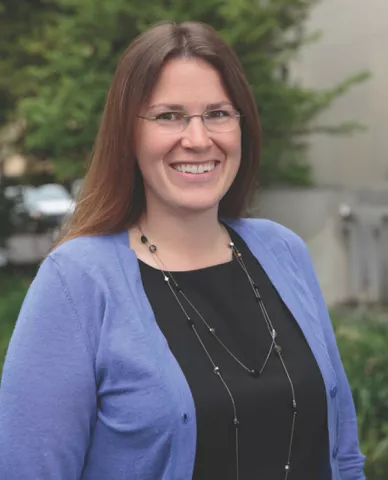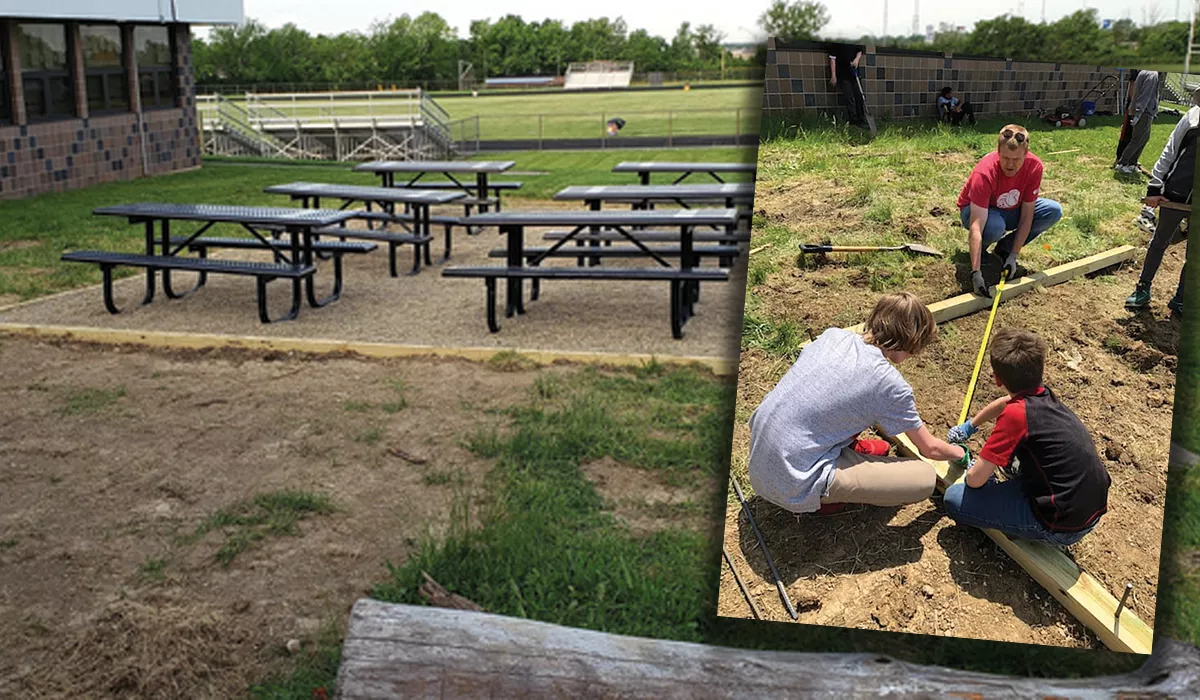Key Takeaways
- Peer learning can help mitigate the emotional issues and feelings of isolation brought on by the COVID-19 pandemic.
- Effective group work requires careful preparation and a culture of collaboration as well as ongoing guidance from teachers.
- Instructors should be thoughtful about the makeup of groups and allow students space to reflect on how their group worked collaboratively.
Ginger Berry noticed that her sixth graders were making a different type of connection last winter as they met in virtual breakout rooms.
Berry, an award-winning math teacher at Shady Grove Middle School, in Maryland, said their excitement about connecting with peers during the pandemic led to productive work on math problems.
“They enjoyed working together, and I was able to leverage the social relationships to allow them to connect on their work, which was a difficult thing during the pandemic,” says Berry, who is known for her ability to engage students in group learning.
That sequence, experts say, from making social connections to engaging in useful, collaborative work to developing longer relationships and broader networks are key benefits of students working together—and might be therapeutic after the challenges of the last school year.
The Case for Collaboration
Growing research has shown that collaboration helps students learn material more deeply and develop personal skills that will last a lifetime.
“Classroom collaboration, done well, not only enhances academic learning and social and emotional skills, but also develops students’ social capital,” says Chelsea Waite, a researcher with The Christenson Institute.
Waite is the author of a report on new approaches to building peer networks that can help with academics, difficult transitions or emotional issues, and bolster often inadequate school resources. Collaboration in the classroom, she says, is an important area where these networks can develop.
Other research shows peer learning can help mitigate the emotional issues and feelings of isolation brought on by the COVID-19 pandemic.
Making it Work
Meghan Hollibaugh Baker, a professor for the George Washington University Graduate School of Education and Human Development, in Washington, D.C., says effective group work requires careful preparation and a culture of classroom collaboration as well as ongoing guidance from teachers.

She recommends teachers begin with a list of 10 strategies for collaborative work devised by her department.
Other experts recommend following the “seven norms of collaboration”— popularized in the 2008 book The Adaptive School.
These norms include establishing standards, such as asking students to pause before responding; paraphrasing often; asking questions; introducing new ideas; using data in discussions; being conscious of others and yourself; and assuming everyone’s intentions are good.
Building Group Skills
Rob Niedermeyer, an engineering and design teacher at Hannah Ashton Middle School, in Reynoldsburg, Ohio, says developing effective collaborative work begins early in the year.
“I start with the expectation of collaboration from day one. I have students work together in small scavenger hunts or jamboards and then work up from there,” he says. “After the first week, students understand that work will rarely be done in an isolated environment.”

Baker notes that students should be coached on how to communicate. She says such “accountable talk” involves sentence stems such as “I agree with __, because...”; “I would like to add on to what [student’s name] said...”; or peer questions, such as, “Where did you find that example in the text?”
Then, she notes, students should learn to practice active listening by making eye contact, avoiding interruption, and repeating important points—skills that have both short- and long-term benefits.
Berry also establishes structure for her groups. “Students need support to learn how to work collaboratively,” she says. “I might provide students with exemplars, sentence starters, and a specific time frame. There also are frequent check-ins.”
Forming Groups
Instructors should be thoughtful about the make up of the groups. Try separating talkative and confident members, Baker suggests, and giving them guidance (perhaps privately) that they can be responsible for making sure others participate.
A group size of four to five students is best, experts say, and rotating roles should be assigned with a focus on interdependence. That can mean reaching a goal together, jointly earning a reward, or celebrating the success of the group or a member.
Niedermeyer is careful to engage with all types of students—those who confidently work with anyone, those who are selective about only working with some students, and those who prefer to work alone.
“The first group is easy, but I need to make sure they are not hijacking the work. The other two need a little more encouragement, so I usually have specific jobs,” he says. “Each role is responsible for their own deliverable, bnone can complete the job without input from the others.”
“Classroom collaboration, done well, not only enhances academic learning and social and emotional skills, but also develops students’ social capital,” says Chelsea Waite, a researcher with The Christenson Institute.
One student leads and keeps a timeline and progress report; another handles group communication, such as presentations or proposals; others track and manage new ideas and manage materials, such as posters and handouts; and another student might direct the discussion and be responsible for keeping the work on track.
“The collaboration in my class really changed once I started implementing these roles,” he says. “Even the most hesitant student will dive in because they can pull back into their specific part of the project once they engaged enough with the rest of the team.”
Berry alternates between assigning groups and allowing students to self-select.
Groups should be evaluated, Baker says, on their own merit—not compared to others—and on criteria that evaluates their work together.
At the end of group projects, Berry asks students to reflect on how the group worked collaboratively, apart from its success at solving a problem.


